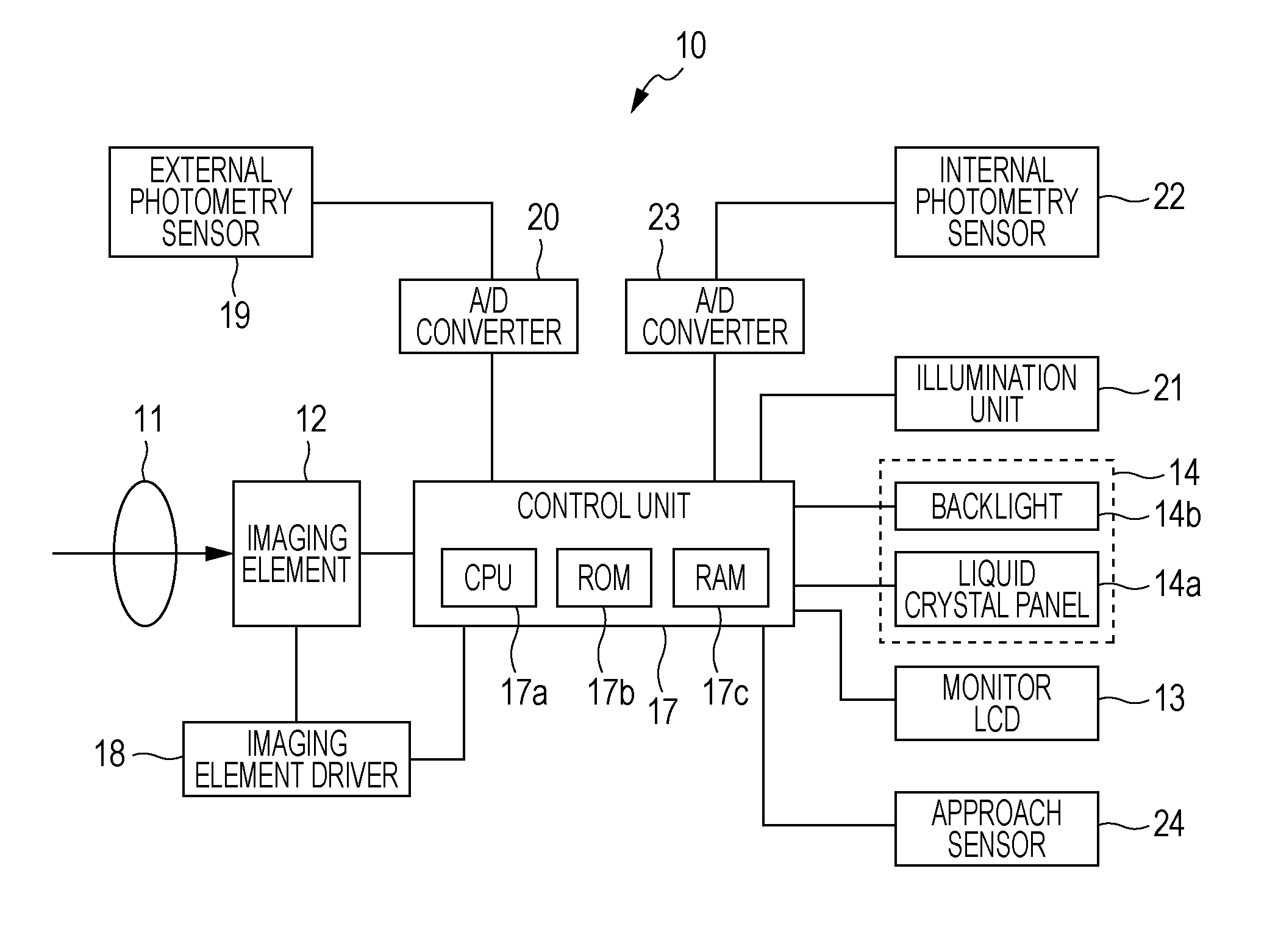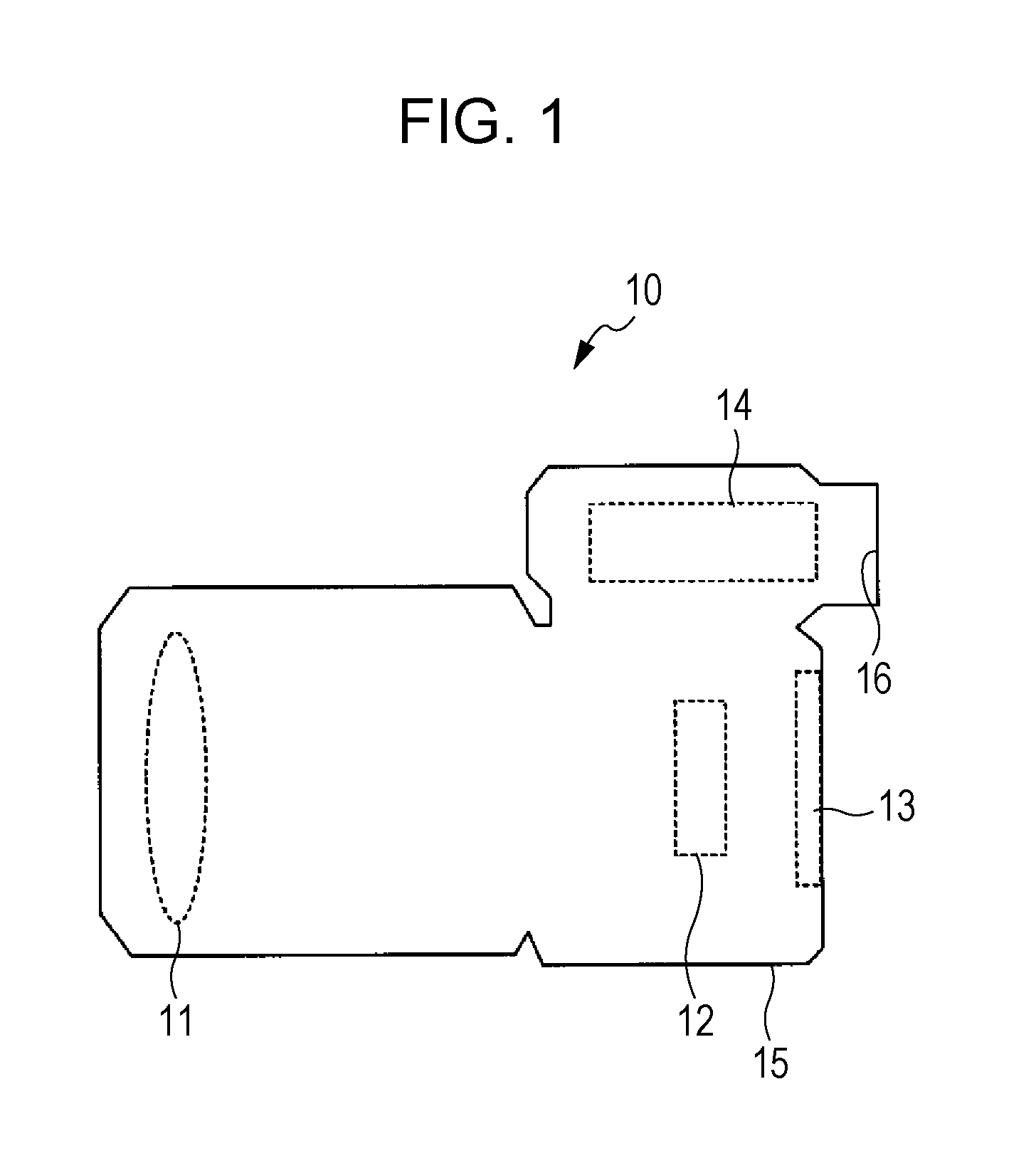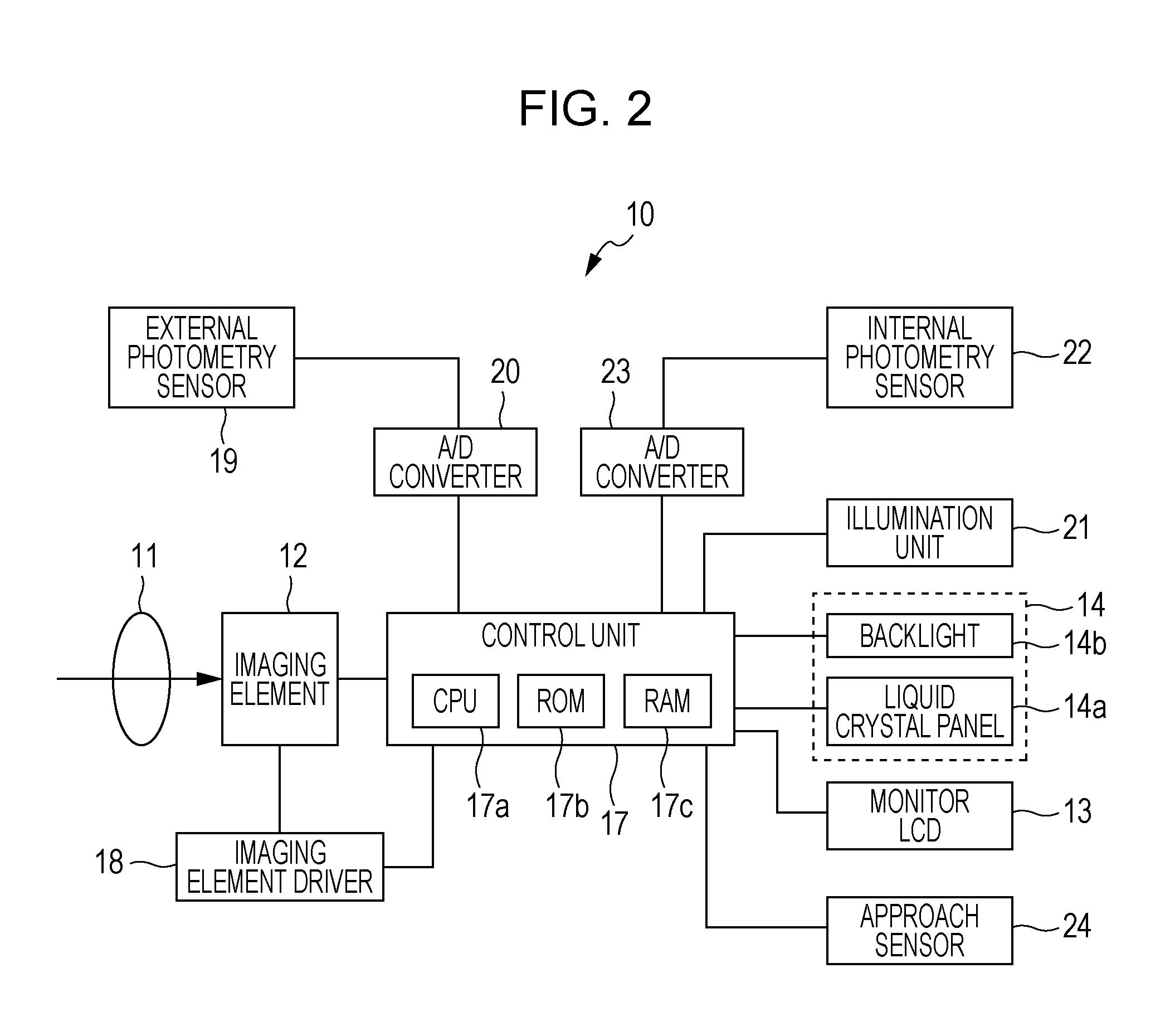Image display device, brightness control method and brightness control program
a technology of brightness control and image display, which is applied in the direction of camera body details, television systems, instruments, etc., can solve the problems of user dizziness, particularly problematic 33701, and user disorientation of thefinder image, so as to reduce or eliminate the disorientation of the user
- Summary
- Abstract
- Description
- Claims
- Application Information
AI Technical Summary
Benefits of technology
Problems solved by technology
Method used
Image
Examples
first embodiment
[0036]FIG. 4 shows a brightness control process mainly performed by the control unit 17 when the EVF 14 is made to display images based on the digital image data and is a flowchart illustrating a process according to the first embodiment. First, in step S100, the control unit 17 obtains the brightness of the outside of the DSC 10 by driving the external photometry sensor 19. In other words, the control unit 17 makes the external photometry sensor 19 measure the light amount of the outside and obtains an output signal as a result of the measurement via the A / D converter 20.
[0037]In step S110, the control unit 17 sets brightness of the EVF 14 according to the brightness of the outside of the DSC 10 obtained in step S100. The brightness of the EVF 14 set here indicates a luminance of the backlight 14b. In this case, the higher the level of the light amount indicated by the measured result (that is, as the outside of the DSC 10 becomes brighter), the higher the luminance set by the cont...
second embodiment
[0044]FIG. 8 shows a brightness control process mainly performed by the control unit 17 when the EVF 14 is made to display images based on the digital image data and is a flowchart illustrating a process according to the second embodiment. First, in step S200, the control unit 17 obtains brightness of the inside of the finder box FB by driving the internal photometry sensor 22. In other words, the control unit 17 makes the internal photometry sensor 22 measure a light amount and obtains an output signal as a result of the measurement via the A / D converter 23.
[0045]In step S210, the control unit 17 sets brightness of the EVF 14 according to the brightness of the inside of the finder box FB obtained in step S200. The brightness of the EVF 14 set here indicates a luminance of the backlight 14b. In this case, the control unit 17 sets a high luminance to the extent that the level of the light amount indicated by the result measured in step S200 is high (that is, as the inside of the find...
third embodiment
[0047]FIG. 9 shows a brightness control process mainly performed by the control unit 17 when the EVF 14 is made to display images based on the digital image data and is a flowchart illustrating a process according to the third embodiment. First, in step S300, the control unit 17 obtains the brightness of the EVF 14. In this case, the control unit 17 can obtain the brightness of the EVF 14 based on any one or both of the digital image data generated and output by the imaging element 12 and the brightness of the backlight 14b. For example, an average luminance for the digital image data is calculated and the calculated average luminance is designated as brightness of the EVF 14. Alternatively, a luminance indicated by a parameter set as indicating a luminance of the backlight 14b by the control unit 17 is designated as brightness of the EVF 14.
[0048]However, here, the control unit 17 obtains the brightness of the EVF 14 based both the digital image data and the brightness of the backl...
PUM
 Login to View More
Login to View More Abstract
Description
Claims
Application Information
 Login to View More
Login to View More - R&D
- Intellectual Property
- Life Sciences
- Materials
- Tech Scout
- Unparalleled Data Quality
- Higher Quality Content
- 60% Fewer Hallucinations
Browse by: Latest US Patents, China's latest patents, Technical Efficacy Thesaurus, Application Domain, Technology Topic, Popular Technical Reports.
© 2025 PatSnap. All rights reserved.Legal|Privacy policy|Modern Slavery Act Transparency Statement|Sitemap|About US| Contact US: help@patsnap.com



